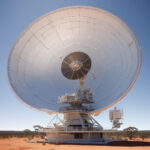The Fascinating World of Animal Navigation: Moth Travels 621 Miles Using Stars as Compass, Scientists Find in a World-First
It has long been known that birds, and even humans, use celestial cues to navigate. The ability of some animals to traverse great distances with precision has always been a subject of wonder and amazement. However, a recent discovery has taken this marvel to new heights – or rather, new lengths. In a world-first finding, scientists have observed a moth traveling an astonishing 621 miles using the stars as its compass.
This groundbreaking discovery sheds light on the incredible navigational abilities of even the smallest creatures in the animal kingdom. The moth in question, a species of the noctuidae family, undertook its remarkable journey across the desert, defying expectations of how far such a tiny insect could travel. Researchers tracked the moth’s progress using advanced technology, including miniature sensors and GPS tracking, to unravel the mystery of its precise navigation.
What makes this discovery even more remarkable is the fact that moths are primarily known for their nocturnal habits, using moonlight to guide their movements. The use of stars as a navigational aid is a behavior rarely observed in these creatures, making this finding all the more extraordinary. It challenges our understanding of insect navigation and opens up new avenues for research into the mechanisms behind this fascinating phenomenon.
The implications of this discovery extend far beyond the world of entomology. Understanding how moths and other animals navigate vast distances using celestial cues could have significant implications for fields such as robotics, where autonomous navigation is a key area of research. By studying the strategies employed by these creatures, scientists may be able to develop more efficient and accurate navigation systems for a variety of applications.
Moreover, this finding highlights the importance of preserving natural habitats and ecosystems, where these remarkable feats of navigation take place. As human activities continue to encroach upon wildlife habitats, it is crucial to recognize and protect the unique abilities of animals like the moth that rely on the natural world for their survival. By conserving biodiversity and natural landscapes, we not only protect these incredible creatures but also gain valuable insights into the secrets of the natural world.
In conclusion, the discovery of a moth traveling 621 miles using stars as its compass is a testament to the extraordinary capabilities of the animal kingdom. This finding not only expands our knowledge of insect navigation but also has the potential to inspire new advancements in technology and conservation. As we continue to unravel the mysteries of the natural world, let us remember the incredible journeys undertaken by creatures big and small, guided by the stars above.
animalnavigation, celestialcues, mothmigration, scientificdiscovery, conservationefforts












